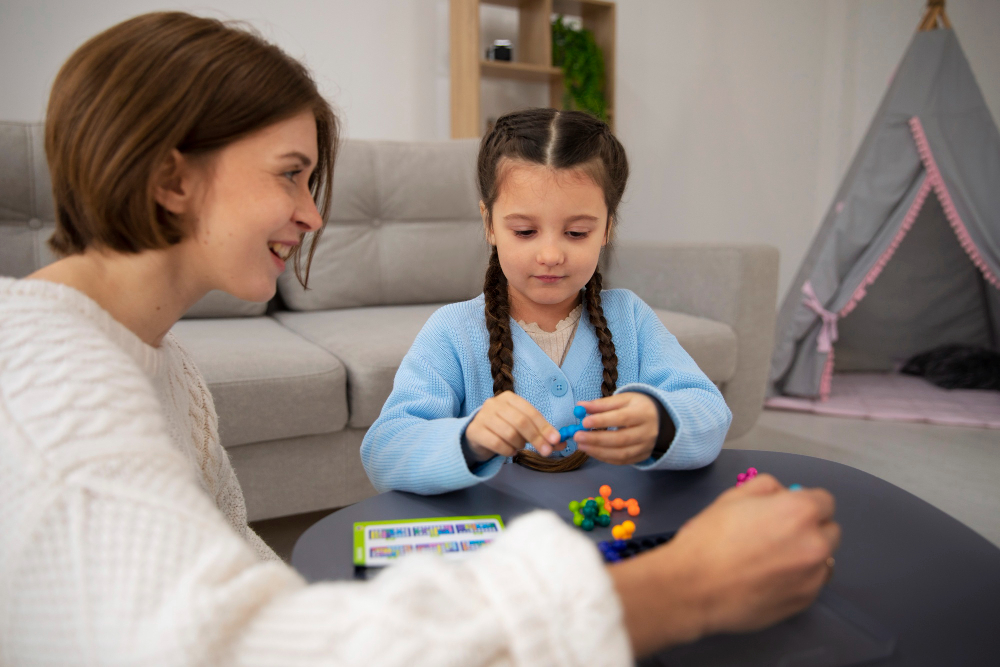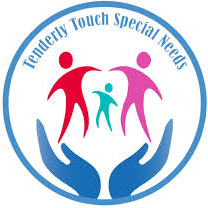
Understanding the Challenges Faced by Non-Verbal Children in ABA Therapy
Applied Behavior Analysis (ABA) therapy is a powerful, research-backed approach to helping children with Autism Spectrum Disorder (ASD) develop crucial life skills. However, when working with non-verbal children, ABA therapy requires additional strategies to address unique communication challenges effectively.
Non-verbal autism means a child may not use spoken language as their primary form of communication. Instead, they may rely on gestures, facial expressions, or alternative communication tools. These differences can create barriers in learning, social interactions, and daily activities, making personalized ABA interventions essential.
The goal of ABA therapy is to break down these barriers and help non-verbal children develop alternative communication methods, independence, and essential life skills. By understanding these challenges and applying tailored solutions, therapists, parents, and caregivers can create a supportive environment that fosters growth and development.
How ABA Therapy Benefits Non-Verbal Children
ABA therapy helps non-verbal children by focusing on individualized learning strategies, reinforcement techniques, and structured interventions. Here’s how:
Enhancing Communication: ABA therapy introduces Augmentative and Alternative Communication (AAC) methods such as Picture Exchange Communication System (PECS), speech-generating devices, and sign language to help children express their needs and emotions effectively.
Building Social Skills: Many non-verbal children struggle with social interactions. ABA therapy teaches them how to initiate play, respond to cues, and interact with peers through structured social activities.
Developing Life Skills: Daily routines such as dressing, eating, and hygiene can be challenging for non-verbal children. ABA therapy breaks these tasks into smaller steps, making learning more manageable.
Reducing Behavioral Challenges: Frustration due to communication barriers often leads to behavioral issues like self-injury, aggression, or withdrawal. ABA therapists work to identify the root causes and implement effective strategies to replace problematic behaviors with positive actions.
Common Barriers in ABA Therapy for Non-Verbal Children
Despite its effectiveness, ABA therapy for non-verbal children comes with challenges. Understanding these barriers is the first step in overcoming them.
Communication Gaps: Since non-verbal children cannot express their needs conventionally, therapists and caregivers must learn to interpret non-verbal cues, gestures, and alternative communication methods.
Resistance to Structured Therapy: Some children may struggle with the structured nature of ABA therapy due to sensory sensitivities or difficulty adjusting to routine-based interventions.
Limited Parental Involvement: Parents play a vital role in reinforcing ABA techniques at home. A lack of awareness or training can result in inconsistencies that affect progress.
Sensory Processing Challenges: Many non-verbal children have heightened sensory sensitivities, making it difficult for them to engage in therapy activities. Addressing these sensory issues is crucial to maximizing the effectiveness of ABA therapy.
Strategies to Overcome Barriers in ABA Therapy
1. Incorporating Augmentative and Alternative Communication (AAC)
Introducing AAC tools such as picture boards, communication apps, and speech-generating devices can significantly improve a child's ability to express themselves.
Example: A child using PECS can hand a picture of a toy to indicate their preference, reducing frustration and encouraging social interaction.
2. Personalizing ABA Goals for Each Child
Every child is unique, so therapy goals must be customized to their strengths and needs. This includes:
Setting achievable communication milestones
Adapting reinforcement strategies based on individual responses
Modifying techniques based on progress and challenges
3. Encouraging Parental Involvement and Training
Parents should be active participants in their child’s ABA journey. Workshops, home-based reinforcement techniques, and guidance from therapists can empower parents to support their child’s development consistently.
4. Addressing Sensory Issues Through Occupational Therapy
Occupational therapy plays a crucial role in managing sensory challenges in non-verbal children. By integrating ABA with occupational therapy in Lucknow, children can benefit from:
• Sensory integration techniques to improve tolerance to stimuli
• Hands-on activities that support motor skills and daily functions
• Customized plans to reduce sensory overload
5. Building a Strong Support Network
Joining support groups or online communities helps parents connect with others facing similar challenges. These platforms offer:
Shared experiences and success stories
Practical advice on ABA techniques and AAC tools
Emotional support and encouragement
Tenderly Touch Special Needs: Your Partner in Occupational and ABA Therapy in Lucknow
If you're looking for professional occupational therapy services in Lucknow, Tenderly Touch Special Needs is here to support your child’s journey. Our dedicated team of experts specializes in providing ABA and occupational therapy tailored to each child's unique needs.
With the right guidance, non-verbal children can develop communication skills, gain independence, and thrive in their daily lives.
FAQs
1. What is the best communication method for non-verbal children in ABA therapy?
AAC tools like PECS, speech-generating devices, and sign language are commonly used to help non-verbal children communicate effectively.
2. How long does ABA therapy take to show results?
The timeline varies based on the child’s needs, consistency in therapy, and parental involvement. Some children show progress within a few months, while others may take longer.
3. Can non-verbal children eventually develop speech?
While some non-verbal children may develop spoken language over time, others rely on alternative communication methods. ABA therapy helps improve overall communication, whether verbal or non-verbal.
4. How does occupational therapy complement ABA therapy?
Occupational therapy focuses on sensory integration, motor skills, and daily living activities, which helps non-verbal children better engage in ABA therapy sessions.
5. How can parents support ABA therapy at home?
Parents can reinforce learned skills, encourage alternative communication methods, maintain a structured routine, and collaborate with therapists to ensure consistent progress.
ABA therapy, combined with occupational therapy in Lucknow, offers non-verbal children the chance to overcome challenges and build a fulfilling future. With patience, the right strategies, and expert support from Tenderly Touch Special Needs, every child has the opportunity to thrive.
Share:
Tenderly Touch Special Needs
At Tenderly Touch Special Needs, we take immense pride in our unwavering commitment to excellence in everything we do. We understand the unique challenges faced by children with special needs, and our goal is to provide the highest quality care, therapy, and education to help every child thrive.
Request A Call Back
Unlock your parenting potential with expert guidance. Contact Tenderly Touch Special Needs today to begin your journey towards personal growth and family harmony. Transform your life, one step at a time.
